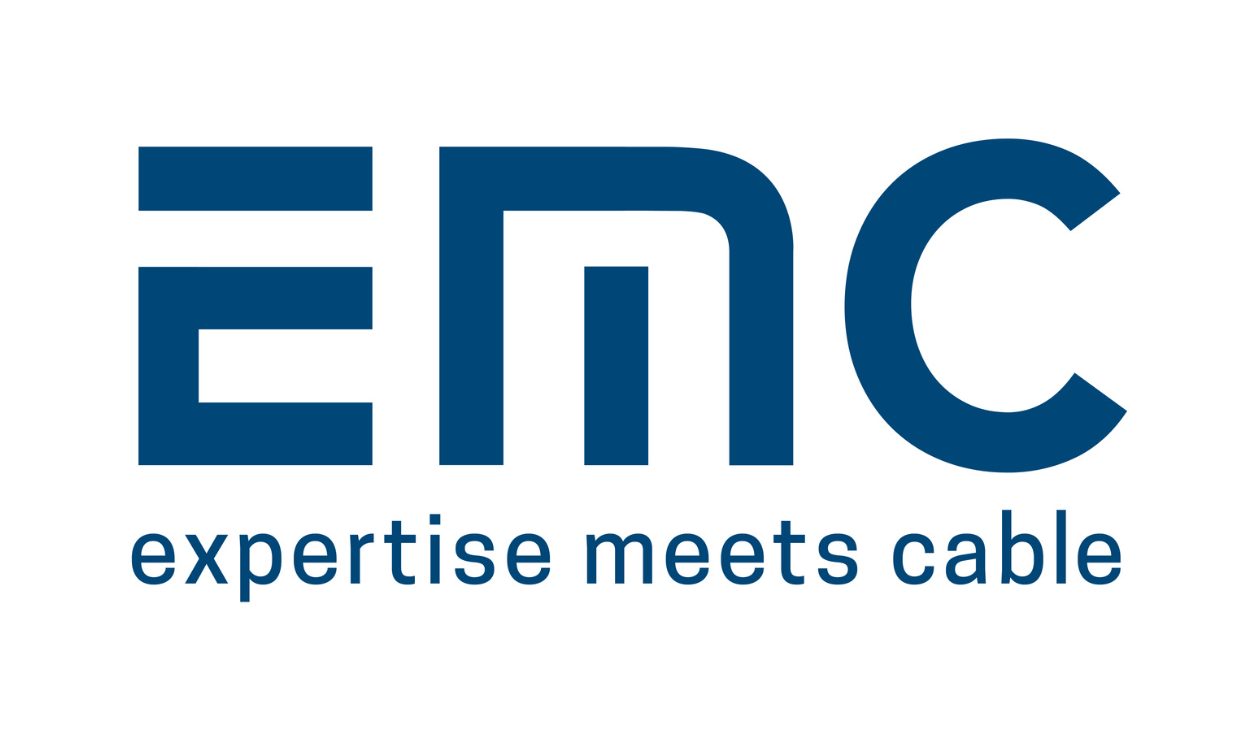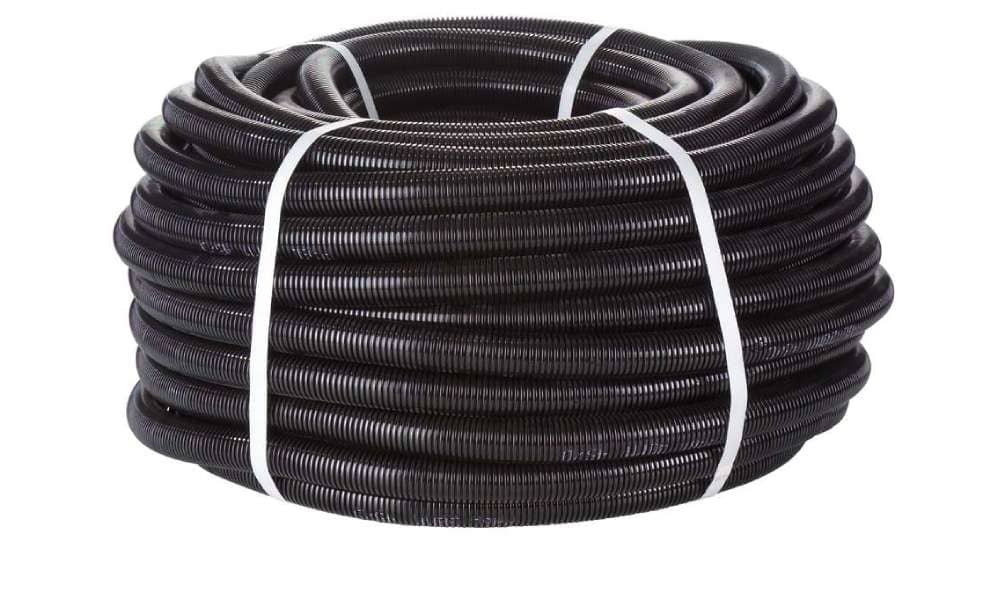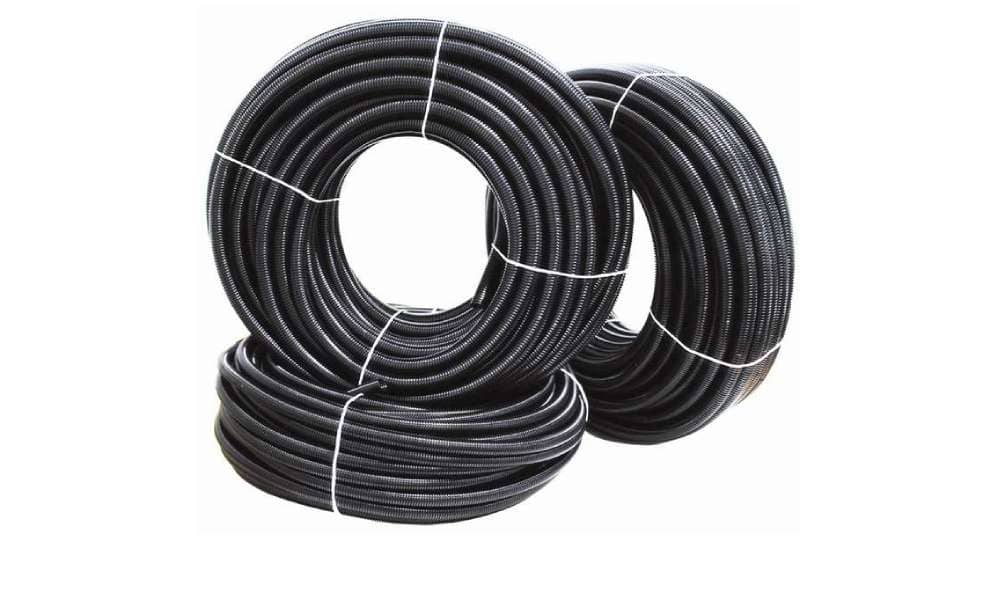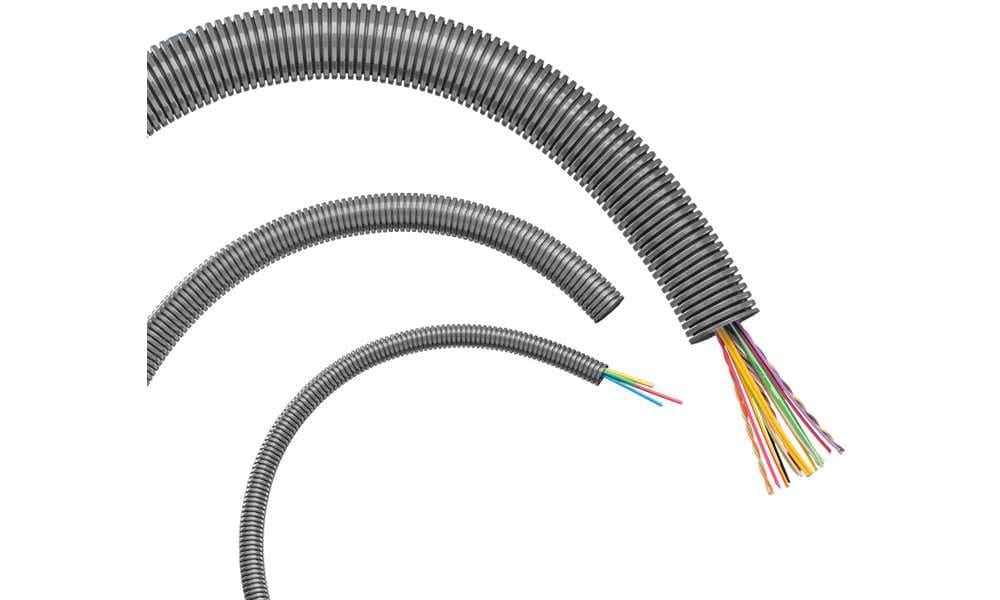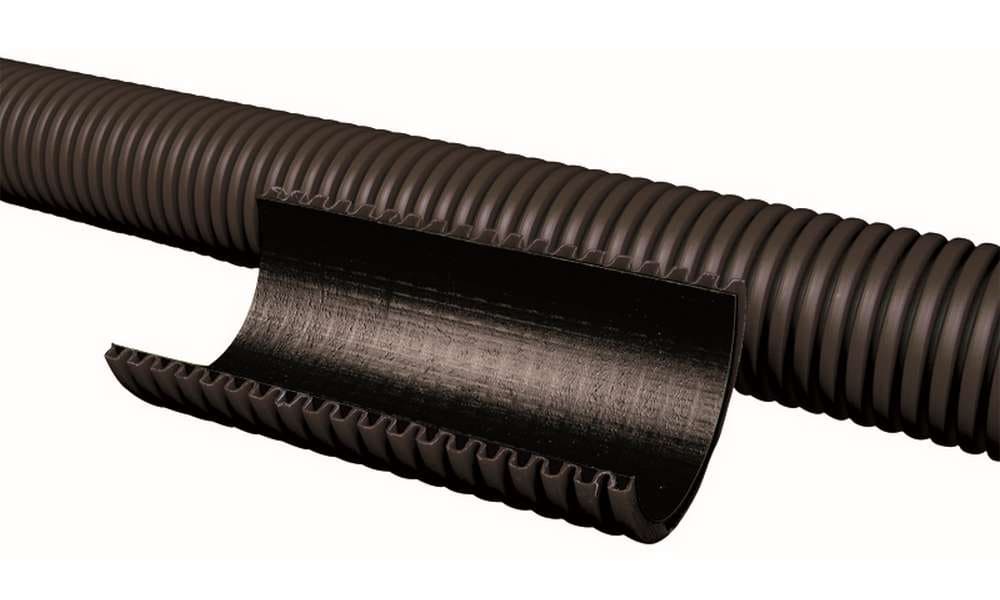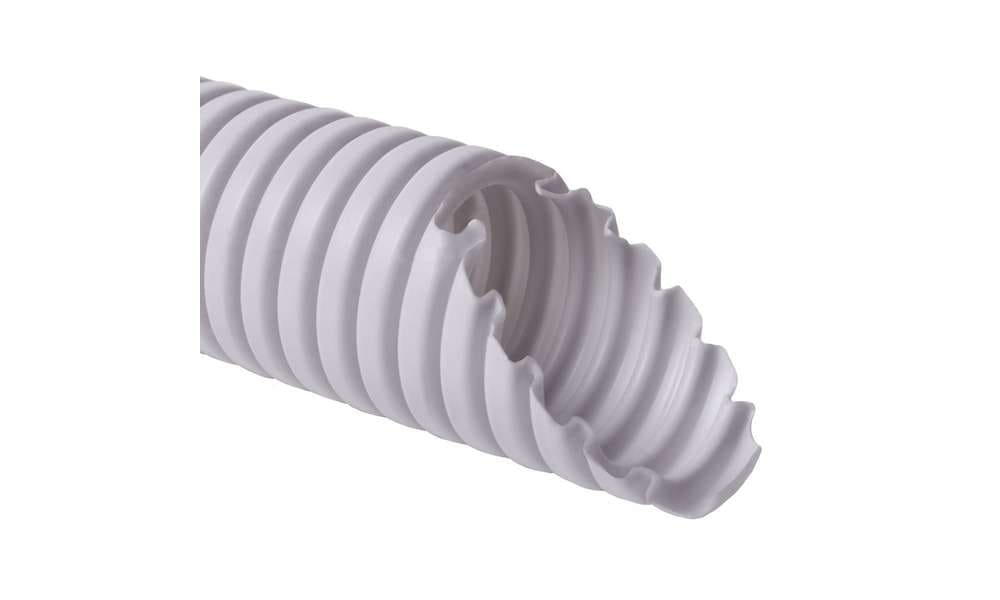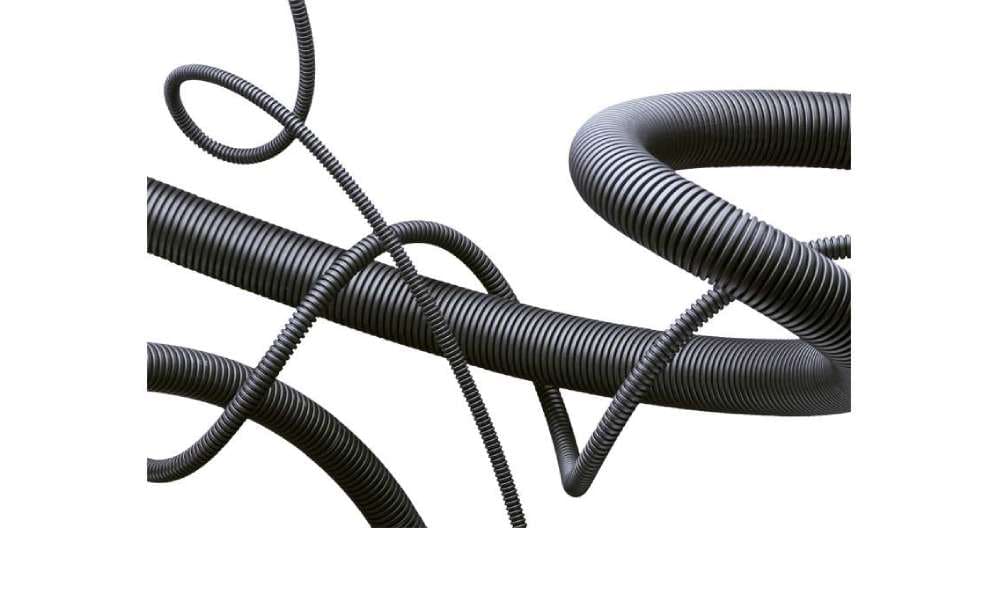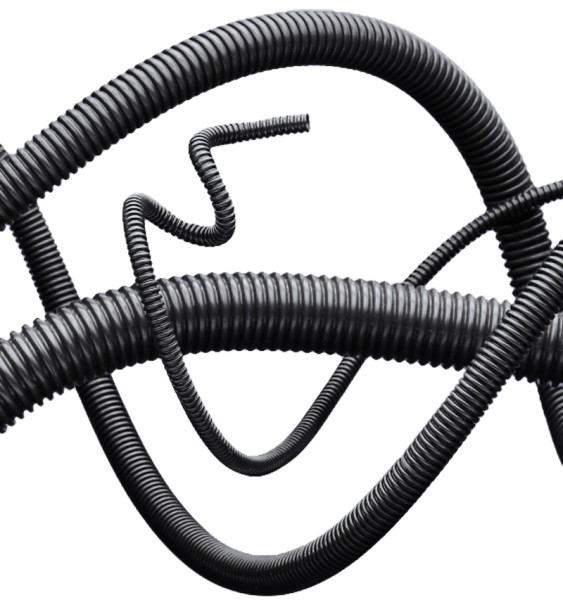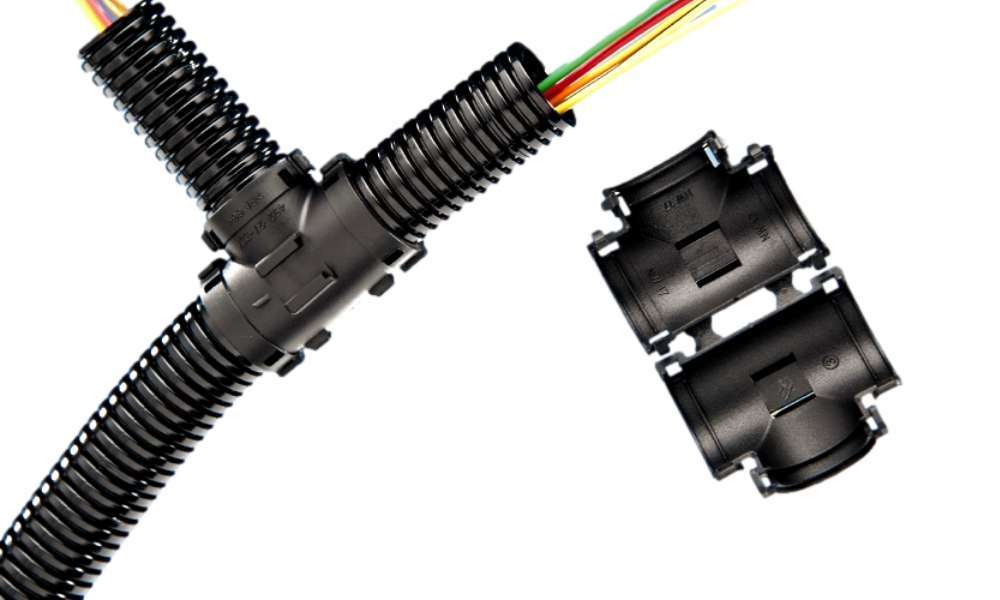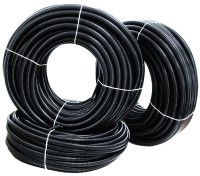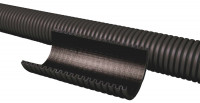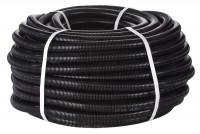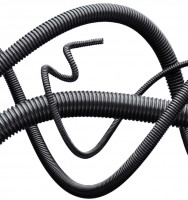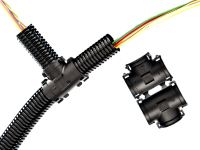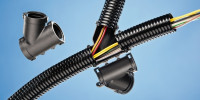Buy corrugated pipe from an expert
As an expert in cable protection, E-M-C-Direct GmbH & Co KG offers you a range of top-quality corrugated conduits. Our range of corrugated conduits includes empty conduits and flexible cable protection conduits in various nominal widths, materials, special designs and colors. Depending on the area of application, we have special corrugated conduits for various industries and applications. We would be happy to advise you on which corrugated conduit is ideal for your application.
Corrugated pipes and corrugated hoses in comparison
From the outside, corrugated hoses hardly differ from corrugated pipes. They also have a corrugated surface. A significant difference between the two products is that corrugated hoses remain elastic after shaping and can be stretched to a certain extent. The main characteristic differences between corrugated hose and corrugated pipe are the thickness and microstructure of the material:
- The thickness and microstructure of the material
- the corrugation geometry (height of the shoulders)
- and the corrugation spacing
Corrugated conduit is an installation conduit and is used as a protective conduit for cables. The special feature of insulating conduit is that it is bendable and flexible. Flexible corrugated conduit is available in various internal diameters and is usually specified in its nominal width. If you use corrugated pipe from different manufacturers, it is important that the inside diameter is the same. Depending on the area of application, corrugated conduits in certain materials such as polyamide 6, polypropylene, PVC, PE, EVA or PFA should be used. Some corrugated conduits are halogen-free.
The areas of application for corrugated conduit are very diverse. Corrugated conduits are therefore also used in a wide variety of industries.
The right corrugated conduit for every application
There is a choice of corrugated conduits and corrugated hoses made from various materials in different corrugated geometries. Which corrugated conduit or corrugated hose is particularly suitable for which application depends to a large extent on the material used and the corrugation geometry. The thinner the material and the higher the shoulders of the corrugations, the more flexible a corrugated hose is. The thicker the hose or pipe material used and the lower the shoulders, the more rigid the corrugated pipes or hoses are. Corrugated hoses that can be opened lengthways are particularly recommended for connecting peripheral devices. All corrugated conduits and corrugated hoses naturally meet the requirements of the relevant standards.
Corrugated conduit is available from us on rolls and not by the meter. Depending on the nominal diameter, the rolls have a different packaging unit. Most of our corrugated pipes are stock items, so that we can also offer you a fast delivery time for corrugated pipes.
We stock flexible pipe from various German manufacturers such as FRÄNKISCHE.
Are you a corporate customer and would like to order large quantities?
Then contact our office staff directly!
Free advice: +49 2369 9846915
Use of corrugated conduit and corrugated conduit in electrical installations
Corrugated conduits and corrugated hoses are ideal as Conduits for electrical, telecommunication and other cables. In the field of electrical installation Corrugated conduits made of plastic are used particularly frequently as empty conduits. Such empty conduits are outdoors and also laid in the Walls, Ceilings or Floors of buildings are installed. If, for example, corrugated hoses are vertical or horizontal slots in the masonry and then plastered, the power cables, telephone, antenna and control cables can be pulled through these empty conduits. In this way, the cables can be easily bundled and are reliably protected from external influences. An additional advantage of this approach is that the cable network can be extended without great effort if required.
The m20 corrugated conduit is one of the standard sizes (nominal widths) in electrical installations. If the empty conduits are laid flush-mounted or in screed, corrugated PVC conduit is usually used. It is important to pay attention to the correct pressure load or mechanical strength of the corrugated conduit. You can find details on this in our blog post: Electrical installation conduits in building installations - how do they differ and what does the numerical code on the corrugated electrical conduits mean?
While corrugated conduits are usually installed flush-mounted in buildings and are therefore not visible, cable ducts are installed under the ceiling or above the screed.
If corrugated conduits are used for outdoor electrical installations such as solar system installations, the corrugated conduits should be UV-resistant. Further information in our blog article: Installing solar systems correctly!
Corrugated hoses and conduits in industrial and mechanical engineering
Corrugated conduits and hoses are also frequently used in mechanical and plant engineering, in shipbuilding and in the automotive industry , for example to protect cables of all kinds from mechanical damage or to create flexible connections to peripheral devices. If you are interested in vehicle construction or body construction, read our blog post: Special products for commercial vehicle construction
Corrugated hoses, also known as flexible hoses, are also used in robotics due to their flexibility. Special corrugated conduits are also available for fire protection . Find out more in our blog post: Corrugated conduit in heat shock
Other areas of application for corrugated tubes and corrugated hoses include
- Heat exchangers
- Solar systems
- Gas installation
Very light and efficient constructions can be realized with corrugated pipes, which is why they are ideal for solar thermal systems, heat exchangers and buffer storage tanks. The increased surface area of the corrugated hoses and corrugated pipes compared to smooth pipes enables very good heat transfer. Another advantage is the low wall thickness of the corrugated pipes. When dimensioning, however, it should be taken into account that the flow behavior of smooth and corrugated pipes differs due to the resulting turbulence.
You can also obtain suitable accessories for the corrugated pipe from us, such as clamps, screw fittings or corrugated pipe connectors . clips for corrugated pipes made of metal can be found in our fastening clips. Just get in touch with us! We want you to always have a positive shopping experience with us, which is why we focus on excellent customer service.
You can find more information on the different areas of application for corrugated conduit in our blog post: Small corrugated conduit basics.
Our corrugated pipes and their properties
Colours
black, other colours on request
black
black
black
black
Nominal widths
4.5 to 100
4.5 to 100
40 to 160
7 to 29
16 to 32
Variants
closed, slotted, divisible / two-part
closed, slotted, divisible / two-part
closed
closed
closed
Integrated cable retraction aid
none
none
Pull rope
none
highly lubricious inner layer
UV resistance
Long-term protection (20 years)
Long-term protection (20 years)
Ultra-long-term protection (30 years)
Applications
Vehicle construction, mechanical engineering, general industrial applications
Photovoltaics, plant engineering, railway technology, outdoor applications
Photovoltaics, plant construction, for laying in the ground and outdoor installation at the same time.
Automotive, chemical industry, all applications with extreme temperatures and aggressive media
Electrical installation, building services engineering
Corrugated conduit - for effective cable protection
Corrugated conduits, also known as empty conduits or cable conduits, are mainly used for electrical installations. These corrugated conduits - as the name suggests - have a corrugated sheath. Cables and wires can be pushed into them so that the corrugated conduit serves as insulation. At the same time, however, it is so flexible that it can be bent and held in this position. Especially when laying several cables, this is a good way of not only holding the cables together and protecting them, but also laying them as required. Such cables can be power cables as well as telecommunications cables and many other lines. Empty conduits are laid both outdoors and in walls. The advantage of this is that you can lay new cables and remove them again at a later date.
Empty conduit - reliable and durable protection
If empty conduits are installed in walls, the required cables can be pulled through at any time later without having to break open the wall or floor. The empty conduits provide adequate space for the cables to be laid. Extensions are also possible at any time. The cable conduits can be laid above the screed, under the ceiling or concealed, i.e. invisible. Depending on how many cables are to be pulled through such an empty conduit later, the conduits are available in different diameters directly from our online store.
Cable conduit for industrial and mechanical engineering
While electrical installations are probably the most common area for using cable conduits, they are also used in mechanical and plant engineering. Here it is particularly important to protect cables from mechanical damage and still create flexible connections to peripheral devices. And corrugated conduits can even be used in vehicle and bodywork construction without any problems. There are also special corrugated conduits for fire protection, heat exchangers, solar systems and gas installations. You can see how versatile empty conduits can be. Find exactly the corrugated conduits you need in our E-M-C-Direct store and feel free to contact us if you have any further questions about our products.
Are you a corporate customer and would like to order large quantities?
Then contact our office staff directly!
Free advice: +49 2369 9846915
